Cover
Copyright
Credits
About the Author
About the Reviewers
www.PacktPub.com
Table of Contents
Preface
Chapter 1: The SELinux Development Environment
Introduction
Creating the development environment
Building a simple SELinux module
Calling refpolicy interfaces
Creating our own interface
Using the refpolicy naming convention
Distributing SELinux policy modules
Chapter 2: Dealing with File Labels
Introduction
Defining file contexts through patterns
Using substitution definitions
Enhancing an SELinux policy with file transitions
Setting resource-sensitivity labels
Configuring sensitivity categories
Chapter 3: Confining Web Applications
Introduction
Listing conditional policy support
Enabling user directory support
Assigning web content types
Using different web server ports
Using custom content types
Creating a custom CGI domain
Setting up mod_selinux
Starting Apache with limited clearance
Mapping HTTP users to contexts
Using source address mapping to decide on contexts
Separating virtual hosts with mod_selinux
Chapter 4: Creating a Desktop Application Policy
Introduction
Researching the application's logical design
Creating a skeleton policy
Setting context definitions
Defining application role interfaces
Testing and enhancing the policy
Ignoring permissions we don't need
Creating application resource interfaces
Adding conditional policy rules
Adding build-time policy decisions
Chapter 5: Creating a Server Policy
Introduction
Understanding the service
Choosing resource types wisely
Differentiating policies based on use cases
Creating resource-access interfaces
Creating exec, run, and transition interfaces
Creating a stream-connect interface
Creating the administrative interface
Chapter 6: Setting Up Separate Roles
Introduction
Managing SELinux users
Mapping Linux users to SELinux users
Running commands in a specified role with sudo
Running commands in a specified role with runcon
Switching roles
Creating a new role
Initial role based on entry
Defining role transitions
Looking into access privileges
Chapter 7: Choosing the Confinement Level
Introduction
Finding common resources
Defining common helper domains
Documenting common privileges
Granting privileges to all clients
Creating a generic application domain
Building application-specific domains using templates
Using fine-grained application domain definitions
Chapter 8: Debugging SELinux
Introduction
Identifying whether SELinux is to blame
Analyzing SELINUX_ERR messages
Logging positive policy decisions
Looking through SELinux constraints
Ensuring an SELinux rule is never allowed
Using strace to clarify permission issues
Using strace against daemons
Auditing system behavior
Chapter 9: Aligning SELinux with DAC
Introduction
Assigning a different root location to regular services
Using a different root location for
SELinux-aware applications
Sharing user content with file ACLs
Enabling polyinstantiated directories
Configuring capabilities instead of setuid binaries
Using group membership for role-based access
Backing up and restoring files
Governing application network access
Chapter 10: Handling SELinux-aware Applications
Introduction
Controlling D-Bus message flows
Restricting service ownership
Understanding udev's SELinux integration
Using cron with SELinux
Checking the SELinux state programmatically
Querying SELinux userland configuration
in C
Interrogating the SELinux subsystem
code-wise
Running new processes in a new context
Reading the context of a resource
Index
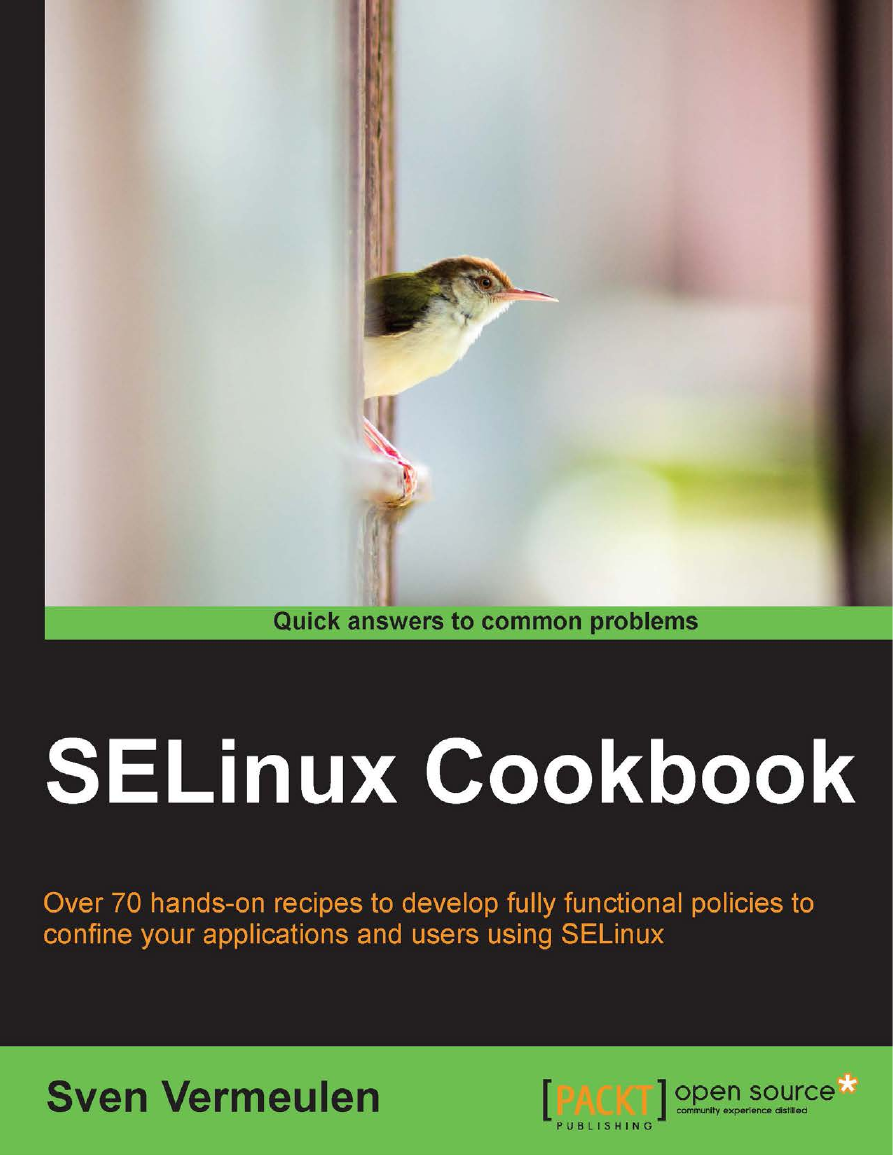
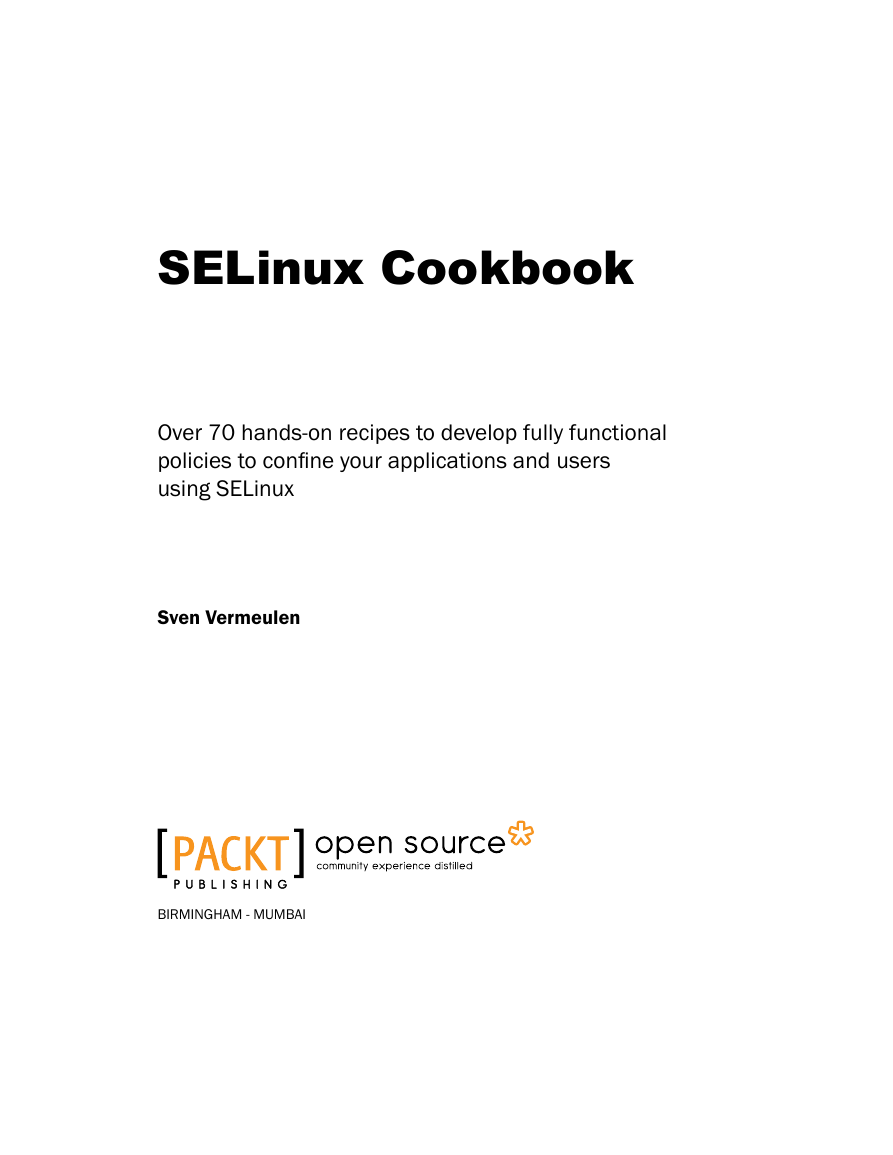
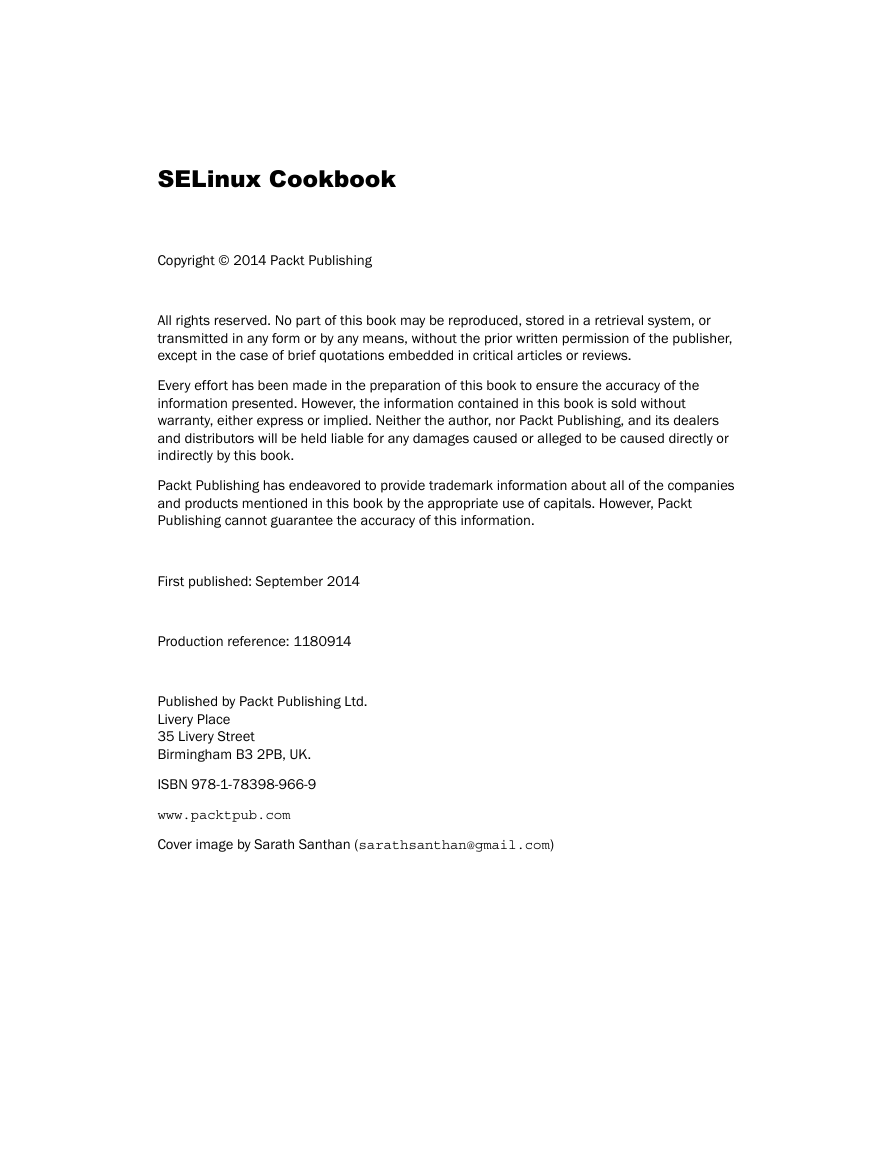

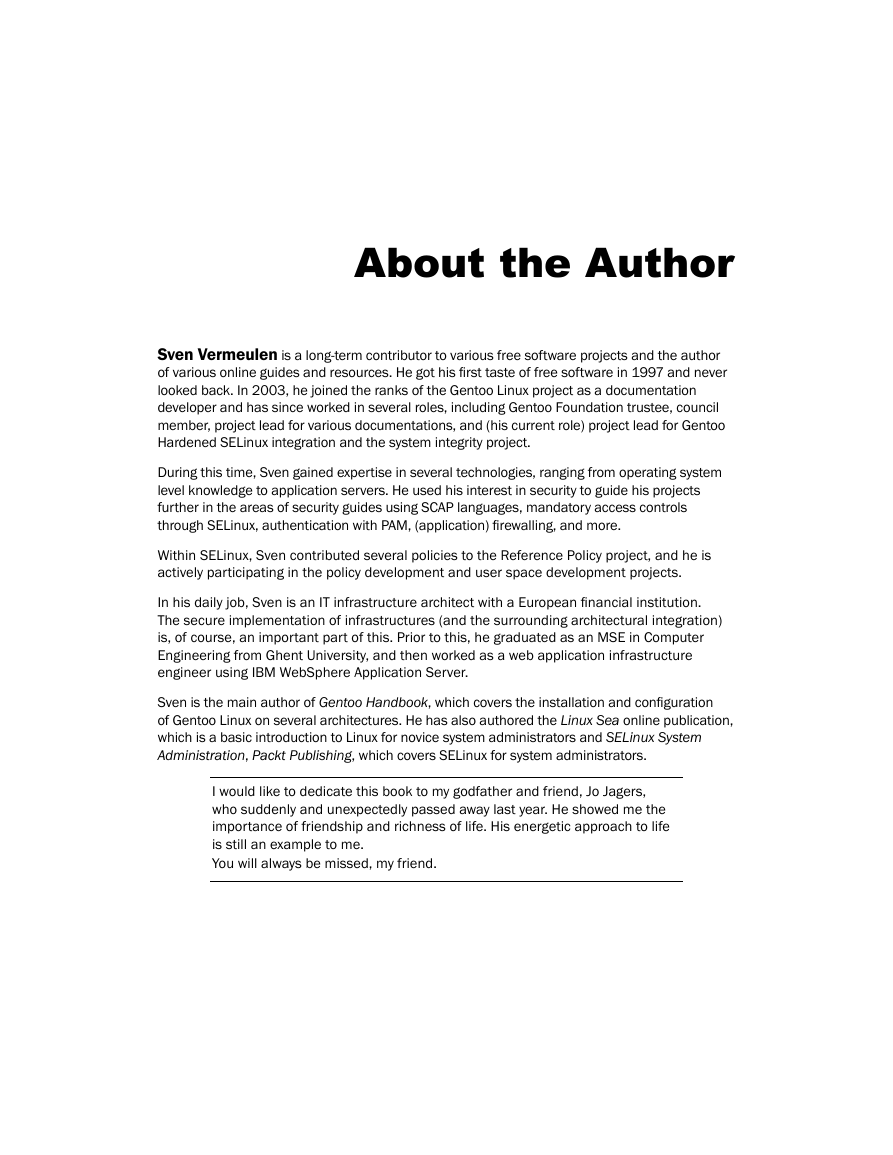

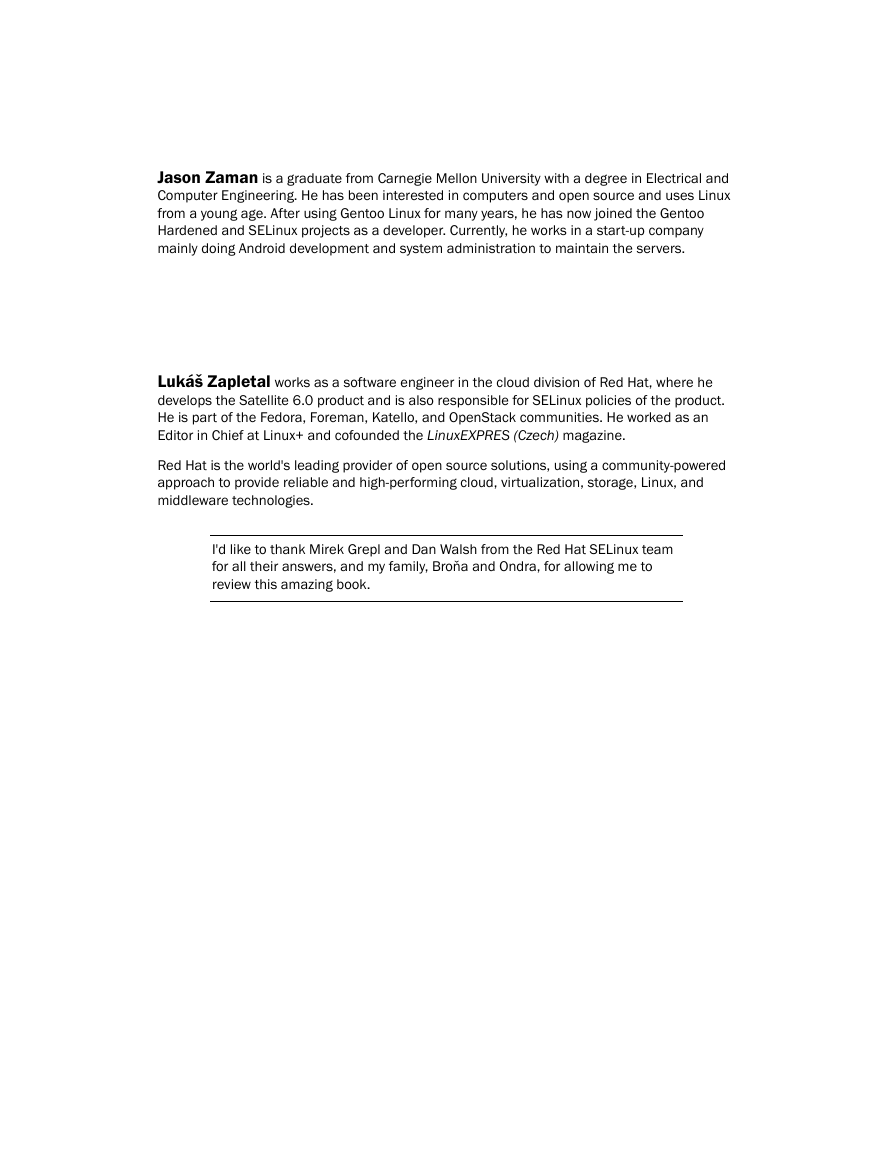
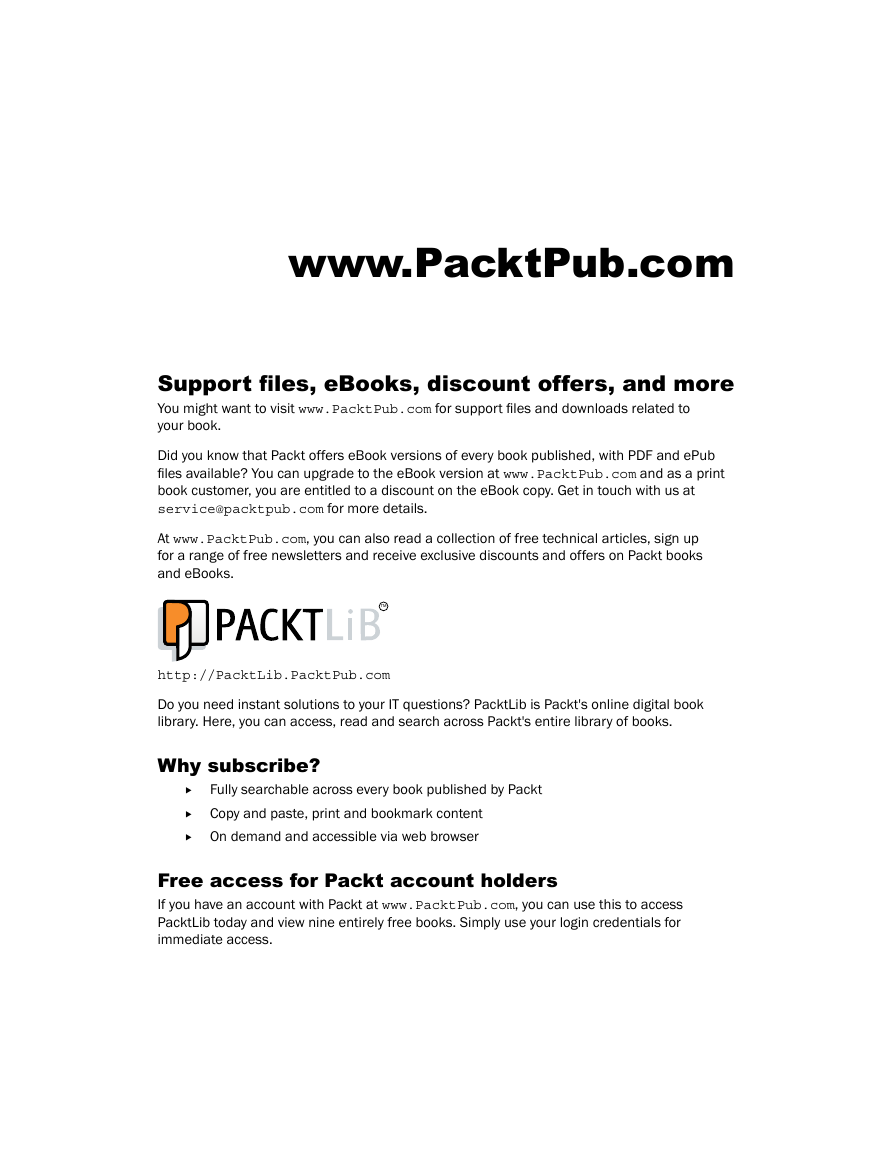








 2023年江西萍乡中考道德与法治真题及答案.doc
2023年江西萍乡中考道德与法治真题及答案.doc 2012年重庆南川中考生物真题及答案.doc
2012年重庆南川中考生物真题及答案.doc 2013年江西师范大学地理学综合及文艺理论基础考研真题.doc
2013年江西师范大学地理学综合及文艺理论基础考研真题.doc 2020年四川甘孜小升初语文真题及答案I卷.doc
2020年四川甘孜小升初语文真题及答案I卷.doc 2020年注册岩土工程师专业基础考试真题及答案.doc
2020年注册岩土工程师专业基础考试真题及答案.doc 2023-2024学年福建省厦门市九年级上学期数学月考试题及答案.doc
2023-2024学年福建省厦门市九年级上学期数学月考试题及答案.doc 2021-2022学年辽宁省沈阳市大东区九年级上学期语文期末试题及答案.doc
2021-2022学年辽宁省沈阳市大东区九年级上学期语文期末试题及答案.doc 2022-2023学年北京东城区初三第一学期物理期末试卷及答案.doc
2022-2023学年北京东城区初三第一学期物理期末试卷及答案.doc 2018上半年江西教师资格初中地理学科知识与教学能力真题及答案.doc
2018上半年江西教师资格初中地理学科知识与教学能力真题及答案.doc 2012年河北国家公务员申论考试真题及答案-省级.doc
2012年河北国家公务员申论考试真题及答案-省级.doc 2020-2021学年江苏省扬州市江都区邵樊片九年级上学期数学第一次质量检测试题及答案.doc
2020-2021学年江苏省扬州市江都区邵樊片九年级上学期数学第一次质量检测试题及答案.doc 2022下半年黑龙江教师资格证中学综合素质真题及答案.doc
2022下半年黑龙江教师资格证中学综合素质真题及答案.doc